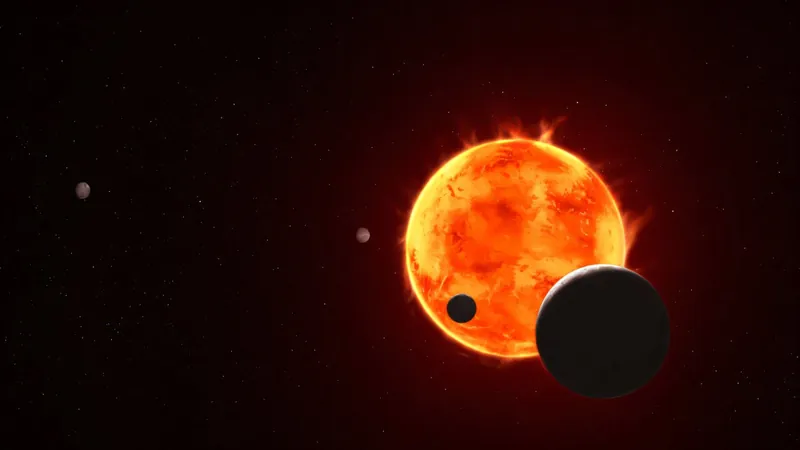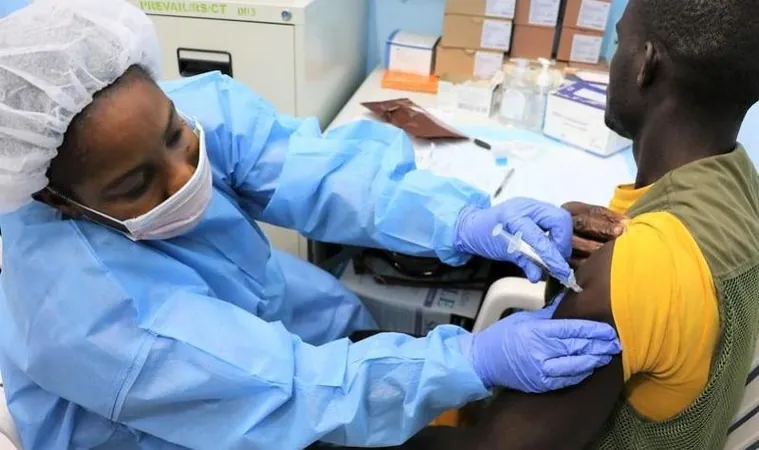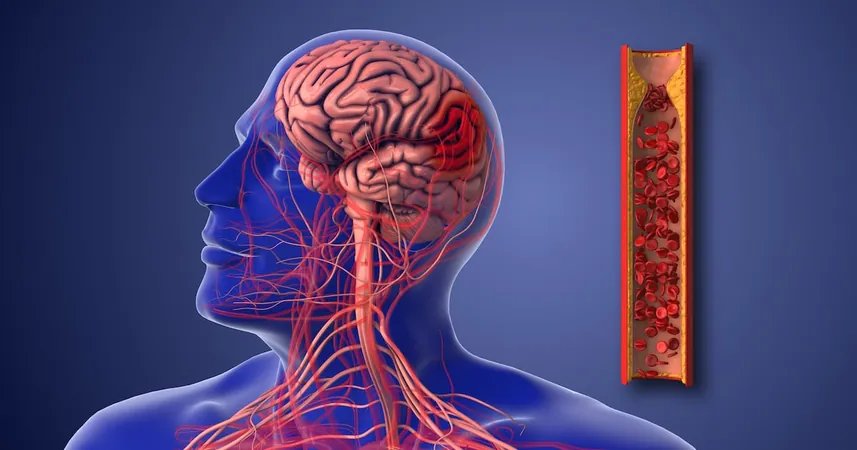
Groundbreaking Study Reveals TRAPPIST-1e’s Atmospheric Mystery: No Venus or Mars Vibes!
2025-09-14
Author: Wei
In the quest to find habitable exoplanets, the atmosphere is crucial for determining their potential to hold liquid water. Many promising candidates reside in the "Goldilocks zone," where conditions are just right—not too hot and not too cold. Thanks to the state-of-the-art James Webb Space Telescope (JWST), astronomers are making significant headway in analyzing these distant worlds.
A new open-access study published today in The Astrophysical Journal Letters offers intriguing insights into the atmosphere of exoplanet TRAPPIST-1e, situated within the TRAPPIST-1 system. Although researchers haven't yet conclusively identified its atmospheric composition—or confirmed the existence of an atmosphere at all—they have successfully ruled out a number of possibilities.
Ana Glidden, a postdoctoral researcher at MIT’s Department of Earth, Atmospheric, and Planetary Sciences, led the study. "We aimed to determine atmospheric scenarios under the assumption that the planet is not airless. Can these scenarios still support liquid water?" Her team found encouraging signs that they could.
Groundbreaking findings indicate a hydrogen-dominated atmosphere is highly unlikely, while offering new insights into secondary-generation gases potentially birthed from volcanic activities. The evidence suggests a tantalizing possibility for a surface ocean.
Sara Seager, a prominent planetary scientist at MIT, commented, "TRAPPIST-1e remains one of the most intriguing candidates in the habitable zone, and these findings sharpen our understanding of what this world could be like." She affirmed that veering away from Venus- and Mars-like atmospheres opens new avenues for exploration.
A Revolutionary Observational Technique
To study exoplanet atmospheres, scientists employ a method called transmission spectroscopy. As planets transit in front of their host stars, the starlight is filtered through their atmospheres, allowing astronomers to detect the presence of specific molecules based on their unique spectral fingerprints.
JWST dwarfs its predecessor, the Hubble Space Telescope, with enhanced wavelength coverage and unmatched spectral resolution, enabling searches for commonly found gases like carbon dioxide and methane from our own solar neighborhood. However, it also faces challenges like stellar contamination, where the host star's fluctuations, such as sunspots and solar flares, complicate data interpretation.
Ruling Out Atmospheric Scenarios
Employing a novel strategy to navigate these stellar disturbances, researchers were able to differentiate between signals from the star and those potentially emanating from TRAPPIST-1e. Their findings suggest that rich carbon dioxide atmospheres—akin to those of Mars and Venus—are improbable. Instead, a warmer, nitrogen-rich atmosphere similar to that of Saturn's moon Titan remains a tantalizing possibility.
Yet the evidence remains inconclusive about whether any atmosphere exists, with additional observations on the horizon intended to further narrow down the possibilities.
Glidden stated enthusiastically, "Our initial findings demonstrate the exceptional advancements enabled by JWST. The forthcoming observations will propel us closer to understanding one of the most promising habitable-zone planets we’ve studied yet."


 Brasil (PT)
Brasil (PT)
 Canada (EN)
Canada (EN)
 Chile (ES)
Chile (ES)
 Česko (CS)
Česko (CS)
 대한민국 (KO)
대한민국 (KO)
 España (ES)
España (ES)
 France (FR)
France (FR)
 Hong Kong (EN)
Hong Kong (EN)
 Italia (IT)
Italia (IT)
 日本 (JA)
日本 (JA)
 Magyarország (HU)
Magyarország (HU)
 Norge (NO)
Norge (NO)
 Polska (PL)
Polska (PL)
 Schweiz (DE)
Schweiz (DE)
 Singapore (EN)
Singapore (EN)
 Sverige (SV)
Sverige (SV)
 Suomi (FI)
Suomi (FI)
 Türkiye (TR)
Türkiye (TR)
 الإمارات العربية المتحدة (AR)
الإمارات العربية المتحدة (AR)